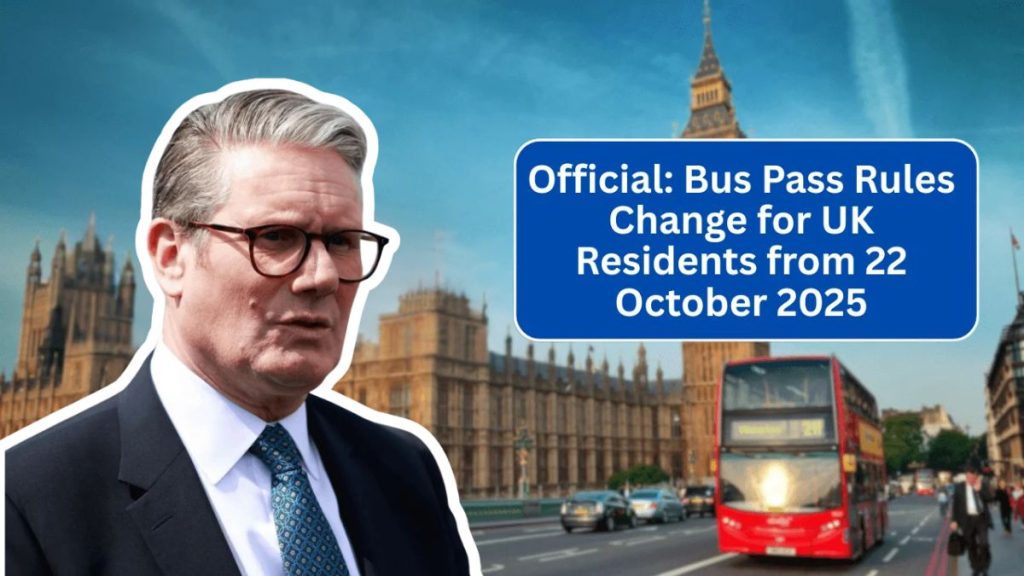The Department for Work and Pensions (DWP) has officially confirmed that the State Pension will increase by around £538 a year from April 2026, thanks to the government’s triple lock guarantee. The latest wage growth figures suggest a mid-4% rise, though the final rate will be confirmed after the September 2025 inflation figure (CPI) is published.
For those on the full new State Pension, this boost will lift weekly payments from £230.25 to roughly £240–£241, bringing the annual total close to £12,500. Pensioners will not need to reapply — the increase will be added automatically.
Triple Lock Mechanism: Protecting Pensioners’ Income

The triple lock ensures that pensions grow each April by the highest of three factors:
- Average wage growth
- September’s Consumer Price Index (CPI) inflation
- A guaranteed minimum of 2.5%
This system is designed to make sure pensioners’ income keeps pace with both inflation and earnings growth. For the 2026 rise, earnings growth is currently outpacing inflation, meaning it will likely set the increase unless inflation surges sharply by autumn.
Projected Figures: What the Increase Looks Like
Based on current projections, a 4.5–4.7% rise would result in:
- Full new State Pension: from £230.25 → around £240–£241 per week
- Annual total: approximately £12,450–£12,510
- Basic (pre-2016) State Pension: from £176.45 → roughly £184–£185 per week
While both pensions rise by the same percentage, the absolute cash increase differs because the older, basic pension starts from a lower base amount.
Who Will Receive the £538 Increase
The confirmed rise applies to all pensioners receiving the State Pension, whether under the new (post-2016) or basic (pre-2016) system.
Those on the full new rate can expect around £538 more per year, while recipients of the basic State Pension will see a slightly smaller cash gain, reflecting their lower starting figure.
The adjustment applies automatically, meaning no application or action is required by pensioners.
Final Confirmation Timeline
The government will officially confirm the new pension rate after the Office for National Statistics (ONS) releases the September 2025 CPI inflation figure in October. The DWP will then announce the final April 2026 State Pension rates in its annual uprating statement.
Until then, projections remain based on wage growth data — which currently stands around 4.5%. If inflation exceeds that figure, it will become the deciding factor for the 2026 rise.
How the Increase Helps with Living Costs
The extra £10–£11 per week may seem modest, but it can make a meaningful difference amid continuing high costs for essentials such as energy, transport, and groceries.
Although overall inflation has eased since its 2022–23 peaks, pensioners still face elevated prices. The triple lock remains vital in helping retirees maintain purchasing power and manage household budgets.
Why the Triple Lock Still Matters
Introduced in 2010, the triple lock has become a cornerstone of pension policy, ensuring that retirement income grows steadily even in uncertain economic conditions.
In recent years, there were debates about its affordability, but the government has repeatedly reaffirmed its commitment — especially given the cost-of-living pressures on older citizens. The 2026 increase once again demonstrates its continued relevance in protecting pensioners’ living standards.
Comparing Basic and New State Pension Systems
Both systems are protected under the same triple lock formula, but they work differently:
- The basic State Pension applies to those who reached pension age before 6 April 2016.
- The new State Pension covers those retiring after that date.
While both rise by the same percentage, the cash uplift is larger for new State Pension claimants because their base weekly rate is higher. As a result, the average annual difference between the two systems will widen slightly from April 2026.
Economic Context: Wages, Inflation, and the Cost of Living
The pension rise reflects broader economic trends. UK wage growth has remained strong through 2025, outpacing inflation in several sectors. However, core prices for essentials remain high.
The DWP’s update comes as the government seeks to balance fiscal discipline with the need to support vulnerable households. The triple lock is viewed as a crucial safeguard, particularly for those on fixed incomes.
How the £538 Boost Is Calculated
The annual increase is derived from the weekly rise multiplied across 52 weeks.
For example:
- £230.25 × 4.6% = £240.85 (rounded)
- £240.85 × 52 weeks = £12,524
This equates to an annual rise of around £538, depending on the final confirmed rate.
Similarly, for the basic State Pension, the calculation results in a £8–£9 weekly rise, or roughly £450 a year.
No Action Needed – Automatic Adjustment
The 2026 increase will be automatically applied to all eligible pensioners. There is no separate claim or form required.
Payments will reflect the new rate from the first full week of April 2026, appearing in the same bank accounts and on the same schedule as before. Pensioners will also receive updated statements showing the revised amount.
Other Related Financial Updates
This announcement comes alongside several other financial measures set for 2025–2026, including:
- The £450 Cost of Living Payment due in October 2025
- The UK Minimum Wage increase in April 2026
- The HMRC £300 bank deduction clarification for pensioners
Together, these form part of a broader package aimed at helping households manage rising expenses during the ongoing cost-of-living squeeze.
Checking Your Pension and Entitlements
Even though the increase is automatic, pensioners are encouraged to:
- Check their State Pension forecast via the government’s official service.
- Review their National Insurance record to ensure all qualifying years are counted.
- Explore Pension Credit eligibility, especially for those on lower incomes.
These steps can help maximise total retirement income and ensure that all available benefits are being claimed.
Impact on Future Retirement Planning
The 2026 rise underscores the long-term value of the State Pension as part of retirement income planning. With the full new State Pension nearing £12,500 annually, it continues to form the foundation of financial security for millions of retirees.
However, experts advise that individuals should also consider private or workplace pensions to maintain a comfortable standard of living, as State Pension alone may not cover all future expenses.
Summary Table of Key Details
| Item | Details |
|---|---|
| Annual Boost | Around £538 on the full new State Pension |
| Weekly Payment (2026) | £240–£241 per week |
| Mechanism | Triple Lock: Highest of earnings, inflation, or 2.5% |
| Confirmation Date | After September 2025 CPI (announced in autumn) |
| Automatic Application | Yes – no claim required |
| Effective From | April 2026 |
| Applies To | Both new and basic State Pension recipients |
The Broader Significance
The DWP’s confirmation provides reassurance to millions of retirees that their incomes will continue to rise in line with economic conditions.
While the increase may not completely offset inflationary pressures, it marks another step toward safeguarding pensioners’ living standards and maintaining the real value of the State Pension in the years ahead.
FAQs on the £538 State Pension Boost
1. When will the £538 increase take effect?
It will apply automatically from April 2026, with the updated amount reflected in the first full payment of that month.
2. Do I need to apply for the new rate?
No. The increase is automatic. Pensioners do not need to submit any forms or claims.
3. How is the percentage rise calculated?
The rate is based on the highest of three factors — average wage growth, inflation (CPI), or 2.5% — under the government’s triple lock policy.
4. Will everyone receive the same £538 increase?
Not exactly. The percentage increase is the same, but the cash amount varies depending on whether you’re on the new or basic State Pension.
5. How can I check my future pension amount?
You can view an updated forecast on the official UK Government’s State Pension forecast service using your National Insurance number.
















